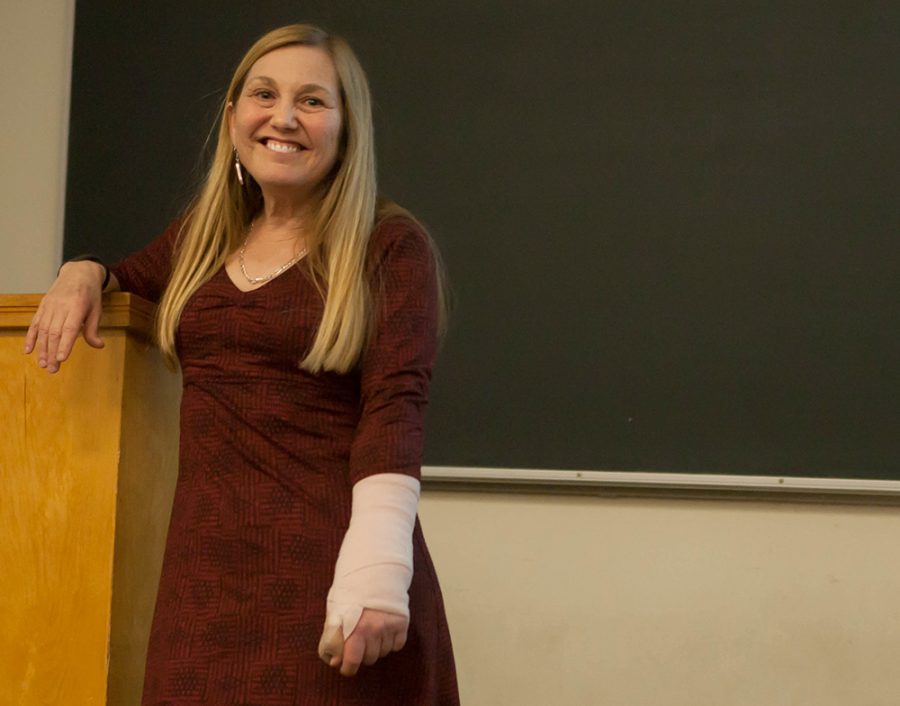Eco-disaster movies a sign of change, professor says
English professor Robin Murray answers questions frollowing her keynote speech of the English Studies Conference.
April 12, 2017
Environmental disasters are never funny, but comedies can show how much people have learned about them, Robin Murray, the keynote speaker for the English Studies Conference, said Wednesday.
Murray, an author and English professor who also coordinates the film studies minor, discussed how comedy benefits environmental awareness in her speech.
She said the existence of the eco-disaster comedy genre shows that the public knows enough about the environment to understand satire about it.
“Laughter might … point out a path toward change, perhaps even showing the consequences of disturbing a pristine ecosystem and offering viable solutions to greedy humans’ exploitation of the natural world,” she said. “These films suggest … that the eco-disaster genre has come of age and can now be satirized.”
Murray said the comedies tend to focus on larger groups and communities than more serious eco-disaster films like “The Day After Tomorrow” and “2012.”
The serious movies are often centered around situations in which nature attacks humans, she said, such as the swarm in Alfred Hitchcock’s “The Birds.”
The comedies, however, tend to focus on man-made disasters, Murray said.
One of the examples she provided was the 2002 film “Eight Legged Freaks,” which features giant mutant spiders that attack humans and have faces resembling dirt bikers’ helmets.
“It is 2002, and mutation is now a source of comedy,” Murray said.
Murray provided more examples of eco-disaster comedies, including “Tank Girl,” a 1995 comedy set in a world that is running out of water.
It follows what Murray described as a “ragtag team” who aim to defeat a rich man who is hoarding what water remains.
Similarly, the animated film “Rango” covers Johnny Depp’s titular character as he tries to save a village plagued by drought.
Another movie Murray cited, “Warm Bodies,” tells a story about the friendship between a human and a teenage zombie.
“Both humans and zombies choose cooperation, accommodation and adaptation instead of destruction,” Murray said.
In her speech, Murray also mentioned two documentaries – “How to Boil a Frog” and “Blue Vinyl: The World’s First Toxic Comedy.”
“Blue Vinyl” focuses on the filmmaker’s attempts to stop her parents from putting blue vinyl siding on their house, leading her to discover the toxicity of vinyl.
Murray said “How to Boil a Frog” is about atmospheric pollution.
Its title is based on the myth that a frog will not jump out of a pot of water if it is slowly brought to a boil.
According to the myth, the frog will die without noticing anything is wrong.
Murray said she finds it unfortunate that most recent eco-disaster films are categorized as “cli-fi,” or climate fiction because they have not come of age yet.
These movies, including “The Day After Tomorrow” and “2012,” tell stories of apocalyptic climate change scenarios.
Murray worked with Joe Heumann, a retired communication studies professor, to write five books, with a sixth in the making.
All six cover environmental issues in movies.
Murray used information from the five currently in print to write her speech.
Mallory Kutnick can be reached at 581-2812 or [email protected].
















































